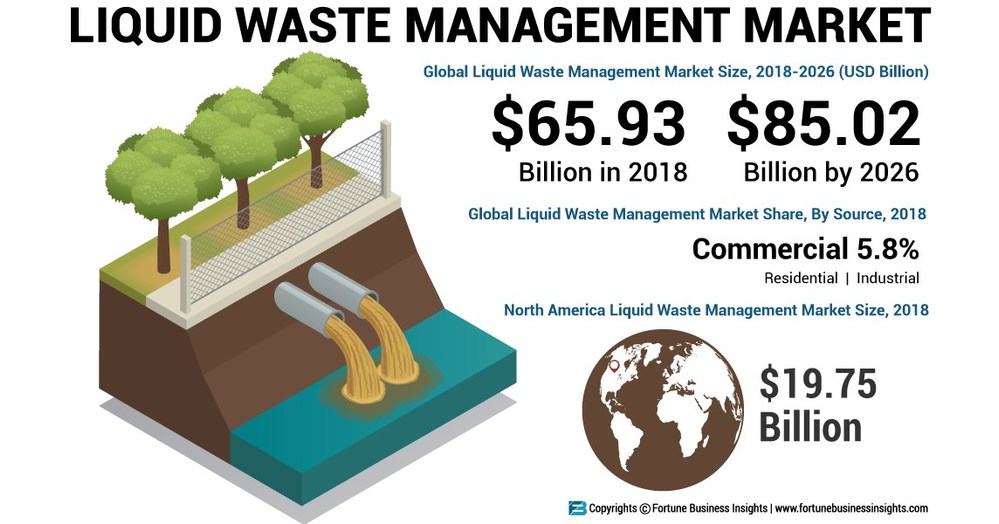The Only Guide to Reclaim Waste
Table of Contents10 Simple Techniques For Reclaim WasteUnknown Facts About Reclaim WasteSome Ideas on Reclaim Waste You Need To KnowReclaim Waste Fundamentals ExplainedRumored Buzz on Reclaim Waste
Residential sewage waste refers to the waste and products from a domestic septic tank. The appropriate administration and disposal of domestic sewer waste call for liquid waste to be transferred to a sewer therapy plant where the correct techniques and devices are used to purify and dispose of waste.
Industrial waste commonly consists of potential dangers, such as flammable products or a mix of fluid and strong waste products, and needs an advanced and in-depth disposal process. The disposal of business waste usually entails the filtration of waste prior to transport to make sure risk-free and correct disposal. Hazardous waste is created from results and overflow of industrial processes and manufacturing.
This type of waste can not utilize the very same sewage management transport or processes as septic or business fluids. The hazardous waste administration process requires the assessment and testing of liquid waste prior to it undergoes the disposal process (liquid waste disposal). Drainage waste is the fluid waste that comes from drainage and excess stormwater in highly booming locations or cities
Drainage waste can trigger contamination and flooding if not dealt with properly. Making certain correct waste administration can prevent catastrophes and minimize ecological harm.
Reclaim Waste Can Be Fun For Everyone
Call PROS Services today to find out about our waste monitoring and disposal services and the appropriate ways to take care of the liquid waste you generate.
(https://myspace.com/reclaimwaste1)This supposed 'wastewater' is not only a crucial resource yet, after treatment, will be launched to our land, waterways or the sea. Utilized water from toilets, showers, baths, kitchen sinks, washings and commercial processes is recognized as wastewater.

water made use of to cool machinery or clean plant and equipment). Stormwater, a form of wastewater, is overflow that moves from agricultural and city locations such as roofings, parks, yards, roads, paths and gutters right into stormwater drains, after rain. Stormwater flows untreated straight to regional creeks or rivers, eventually getting to the ocean.
The 7-Minute Rule for Reclaim Waste
In Queensland, a lot of wastewater is dealt with at sewage treatment plants. Wastewater is carried from domestic or commercial sites through a system of sewers and pump stations, referred to as sewage reticulation, to a sewage treatment plant. City governments build, maintain and operate most sewer treatment plants. Operators are certified under the Environmental Management Act 1994 to discharge cured wastewater at an acceptable ecological standard into rivers.
The Division of Natural Resources encourages city governments regarding handling, operating and keeping sewage systems and treatment plants. In unsewered locations, regional governments may need householders to install specific or house sewer therapy systems to treat residential wastewater from toilets, cooking areas, washrooms and laundries. The Division of Natural Resources authorises making use of house systems when they are proven to be efficient.
Many stormwater gets no treatment. In some brand-new neighborhoods, treatment of some stormwater to remove trash, sand and gravel has started using gross toxin traps. Wastewater treatment occurs in four stages: Gets rid of strong issue. Larger solids, such as plastics and other objects mistakenly released to sewage systems, are gotten rid of when wastewater is travelled through displays.
Uses little living organisms recognizes as micro-organisms to damage down and remove remaining dissolved wastes and great bits. Micro-organisms and wastes are included in the sludge.
How Reclaim Waste can Save You Time, Stress, and Money.
Nutrient see this page removal is not offered at all sewer therapy plants since it calls for expensive specialized devices. Clear fluid effluent created after therapy may still include disease-causing micro-organisms - liquid waste disposal melbourne.

This usually suggests wastewater has actually to be dealt with or contaminants removed before it can be discharged to waterways. A lot of wastewater flows right into the sewage system. Under the Act, local federal governments administer approvals and licences for environmentally appropriate activities (Periods) involving wastewater launches that might have a neighborhood influence. The division carries out authorizations and permits to Periods including wastewater releases that might have a local or statewide effect.
The Best Guide To Reclaim Waste
Otherwise, examples are considered laboratory analysis. Commonly numerous tests are required to develop the degrees of each of the various contaminants such as oils, heavy metals and pesticides in water. Surveillance provides accurate details concerning water high quality and can verify that licence conditions are being met. The information gotten through tracking supplies the basis for making water quality decisions.